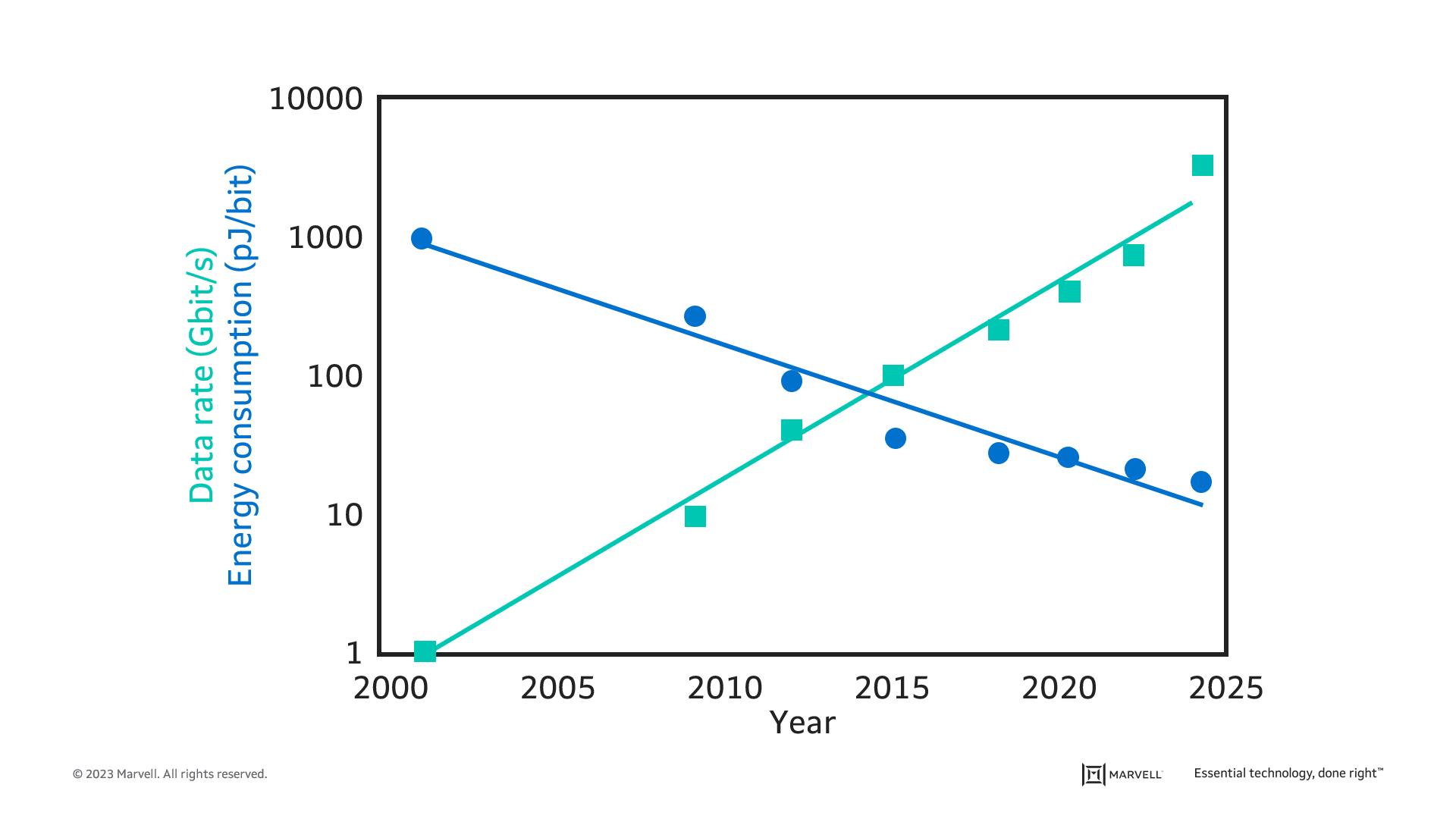- PRODUCTS
- COMPANY
- SUPPORT
- PRODUCTS
- BY TYPE
- BY MARKET
- COMPANY
- SUPPORT
How Optical Technology Will Save the Cloud
This article was first published by Photonics Spectra
The cloud. It evokes an ethereal, weightless environment where problems get whisked away by a breeze.
In reality, the cloud consists of massive industrial buildings containing millions of dollars’ worth of equipment spread over thousands, and increasingly millions, of square feet. In Arizona, some communities are complaining that cloud data centers are draining their aquifers and consuming far more water than expected1 while in the UK and Ireland the power requirements of data centers are crimping needed housing development. Even in regions like Northern Virginia where the local economies are tightly bound to data centers, conflicts between residents and the cloud are emerging.
With the rise of AI, these conflicts will escalate. AI models and data sets are growing exponentially in size2 and developers are contemplating clusters with 32,000 GPUs, 2,000 switches, 4,000 servers and 74,000 optical modules3. Such a system might require 45MW of power capacity, or nearly 5x the peak load of the Empire State Building. This resource-intensiveness also shows how AI services could become an economic high wire act for many.

Performance up, Power Down: Over 20 years, the data rate of optical modules has increased by 1000x while power per bit has decreased by 100x.
Armchair critics would say the answer is easy: no more data centers! Our daily lives, however, depend on these anonymous beige buildings. Data centers will also play a pivotal role in sustainability. The World Economic Forum asserts that digital technology could reduce emission by 15% by 20304, by fine-tuning power consumption in buildings, homes and factories.
Optical technologies can become a gateway for turning these facilities into good neighbors and putting AI on a firm, sustainable footing. Over the last twenty years, data centers have been increasingly integrating optical into their facilities. Microsoft, for instance, runs more than 200 data centers connected by over 175,000 miles of terrestrial and subsea optical connections5. Equinix, another cloud provider, has 392,000 interconnections5. Streaming and other new services wouldn’t have been able to grow as fast as they did without the exponential improvements in efficiency and performance.
Now, new and upcoming technological advancements are set to launch a chapter in this story. A brief tour of what the industry can expect to see as a result of this progress follows.
For more, please go to the full article at Photonics Spectra
Footnotes:
1. NBC Jan 2021.
2. IEEE Feb 2023
3. Dr. Loi Nguyen, Marvell, OCP, Oct 2023
4. World Economic Forum Jan 2019
This blog contains forward-looking statements within the meaning of the federal securities laws that involve risks and uncertainties. Forward-looking statements include, without limitation, any statement that may predict, forecast, indicate or imply future events or achievements. Actual events or results may differ materially from those contemplated in this blog. Forward-looking statements are only predictions and are subject to risks, uncertainties and assumptions that are difficult to predict, including those described in the “Risk Factors” section of our Annual Reports on Form 10-K, Quarterly Reports on Form 10-Q and other documents filed by us from time to time with the SEC. Forward-looking statements speak only as of the date they are made. Readers are cautioned not to put undue reliance on forward-looking statements, and no person assumes any obligation to update or revise any such forward-looking statements, whether as a result of new information, future events or otherwise.
Tags: Coherent DSP, Optical Module, PAM4 DSP
Recent Posts
Archives
Categories
- 5G (12)
- AI (26)
- (26)
- Cloud (14)
- Coherent DSP (8)
- Company News (101)
- Custom Silicon Solutions (6)
- Data Center (48)
- Data Processing Units (22)
- Enterprise (25)
- ESG (6)
- Ethernet Adapters and Controllers (12)
- Ethernet PHYs (4)
- Ethernet Switching (39)
- Fibre Channel (10)
- Marvell Government Solutions (2)
- Networking (34)
- Optical Modules (13)
- Security (6)
- Server Connectivity (25)
- SSD Controllers (6)
- Storage (22)
- Storage Accelerators (2)
- What Makes Marvell (38)
Copyright © 2025 Marvell, All rights reserved.
- Terms of Use
- Privacy Policy
- Contact

